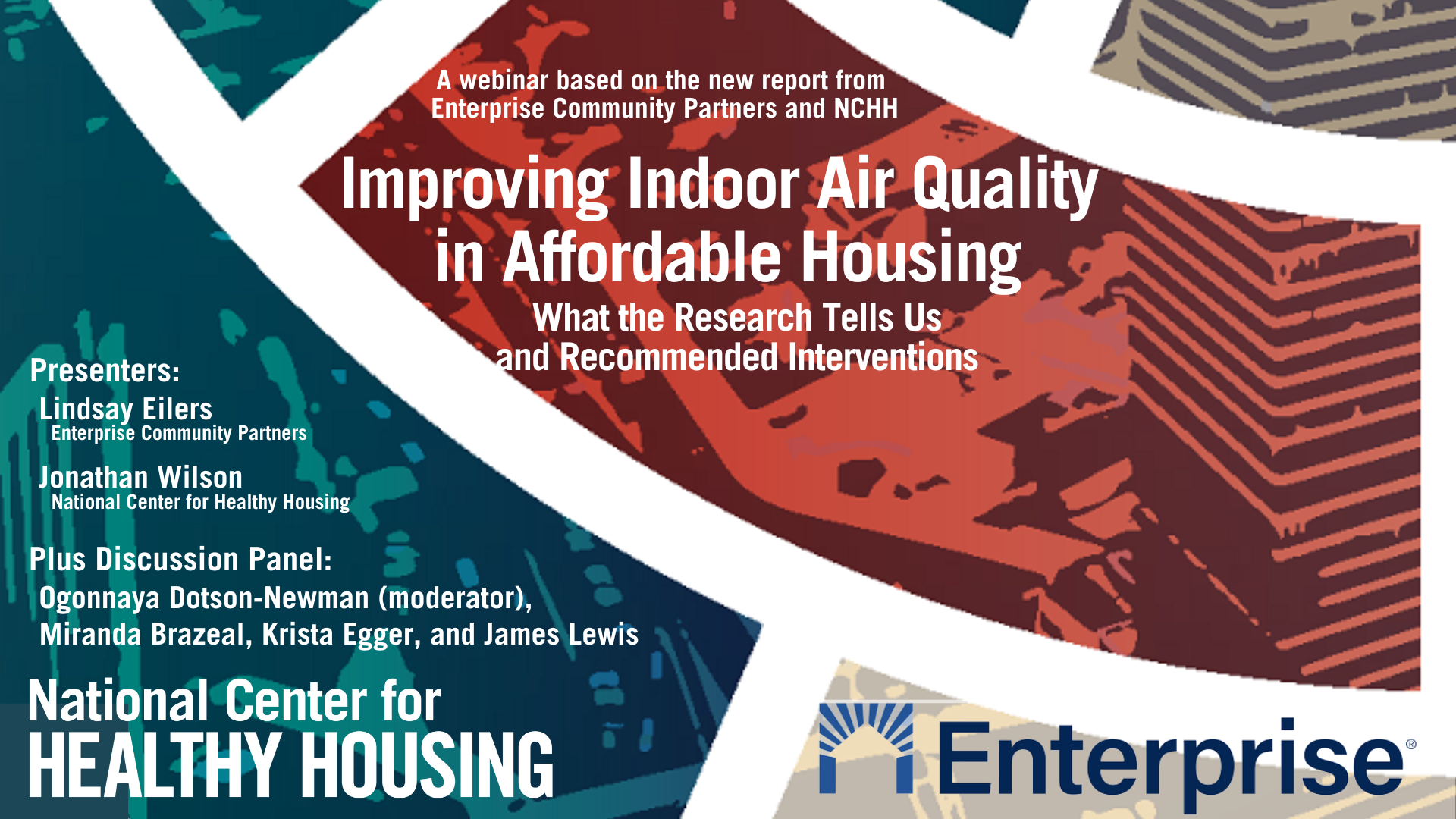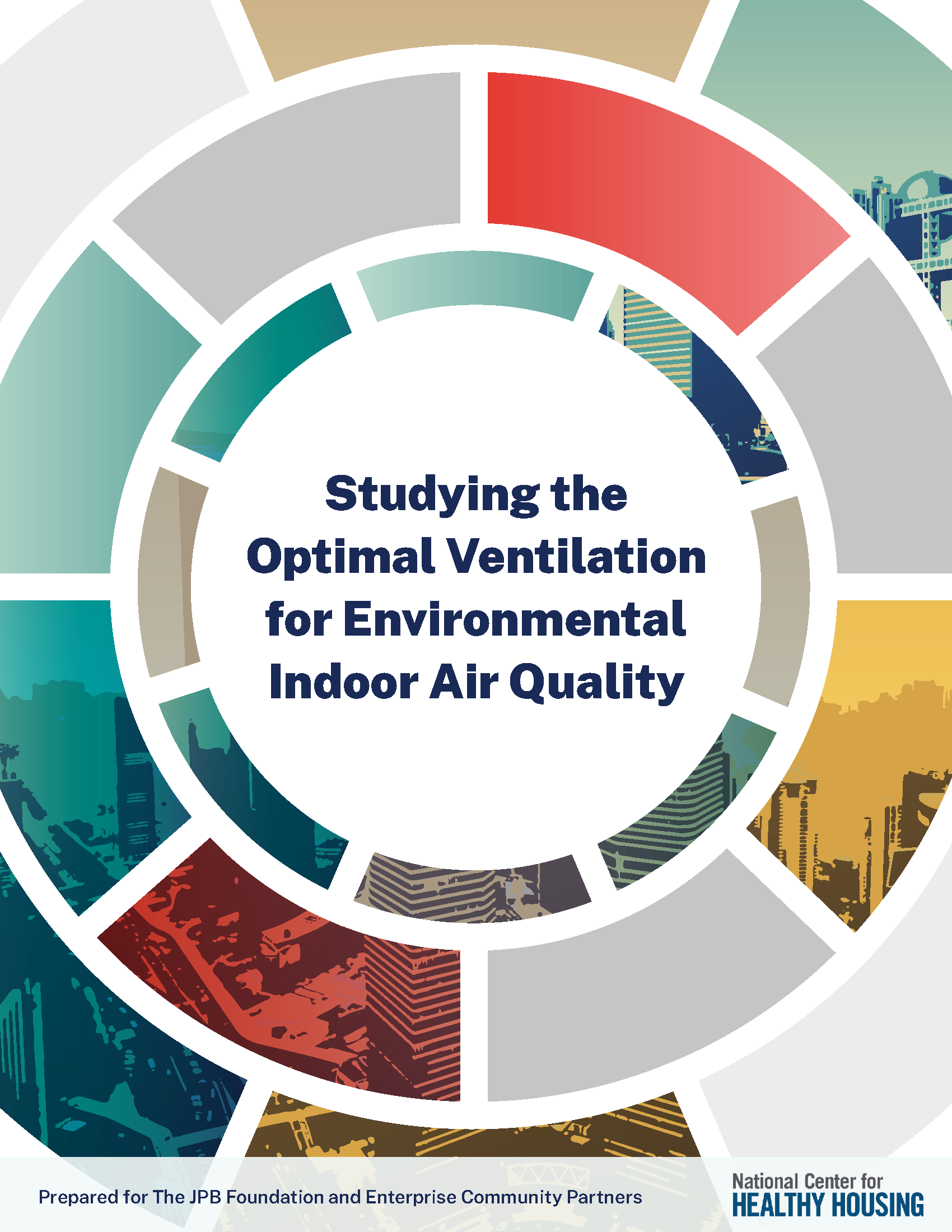Project Funders: Enterprise Community Partners with generous support from the JPB Foundation, the Kresge Foundation, and the Wells Fargo Foundation.
Project Partners: Icahn School of Medicine at Mount Sinai, University of California San Francisco, and the University of Illinois Chicago
Project Contact: Jonathan Wilson, jwilson@nchh.org, 443.539.4162
Project Description
Studying the Optimal Ventilation for Environmental Indoor Air Quality (STOVE IAQ) gathered evidence of the health and environmental benefits that green affordable housing meeting ventilation criteria brings to families and communities. This will help to transform the practices of affordable housing developers and influence policymakers and capital providers to support, require, or incentivize the development and rehabilitation of green affordable housing. The STOVE study focused on multifamily affordable homes with working gas stoves. Half of the homes were designed to comply with the standard for acceptable indoor air quality established by the American Society of Heating, Refrigeration and Air-Conditioning Engineers (ASHRAE 62.2 standard). The evidence gathered through STOVE IAQ will help to (1) convince housing developers and owners to increase compliance with the ASHRAE standard; (2) influence policymakers to change regulations and building and housing codes to make healthy building practices a universal requirement; and (3) convince governments and capital providers that investments in green and healthy housing will result in significant financial and societal benefits.
In this study, we conducted indoor air quality (IAQ) sampling for several air contaminants after substantial rehabilitations that complied with the Enterprise Green Communities criteria. Approximately half of enrolled dwellings had ASHRAE-compliant ventilation and the other half did not, but all were sampled for three four-day blocks over an eight-month period. The air contaminants included particulate matter (PM2.5), carbon dioxide (CO2), carbon monoxide (CO), and nitrogen dioxide (NO2), all of which come from combustion equipment such as furnaces and stoves; formaldehyde, which off-gasses from building products and furnishings; and nicotine from tobacco smoke, e-cigarettes, or vaporizers (“vapes”). The study also collected data on self-reported resident health parameters, particularly respiratory-related health effects. We compared health and IAQ outcomes between these two groups, determining whether Green Communities-rehabbed homes with ASHRAE-compliant ventilation resulted in lower levels of the above measures than Green Communities-rehabbed homes without such ventilation. . Results show that ASHRAE-compliant ventilation reduced PM2.5, CO2, CO, and formaldehyde significantly but not NO2 (possibly because of outdoor air quality and other factors).

The STOVE-IAQ study was the subject of a recent webinar, Improving Indoor Air Quality in Affordable Housing, which will be available to view on YouTube starting August 2, 2022.
The primary beneficiaries of this study will be the residents of affordable housing developments within low- and moderate-income communities. A secondary population—the developers, owners, and managers of these properties—will benefit from the lessons learned from this study. Finally, the results of this study will be used to inform and educate investors and government partners at the city, state, and federal levels about the importance of green and healthy affordable housing.
Resources
Studying the Optimal Ventilation for Environmental Indoor Air Quality [pdf; 2022]
Studying the Optimal Ventilation for Environmental Indoor Air Quality [Summary] [pdf; Enterprise Community Partners, 2022]
Improving Indoor Air Quality in Affordable Housing: What the Research Tells Us and Recommended Interventions [webinar; Enterprise Community Partners/NCHH, 2022]
Press release: New Study Finds Ventilation Significantly Reduces Indoor Pollutant Levels and Adds New Evidence for Eliminating Gas Stoves [url; 2022]
Related
Healthy Homes, Happy Kids Research Study [url; Enterprise]
Latest page update: April 14, 2022.

